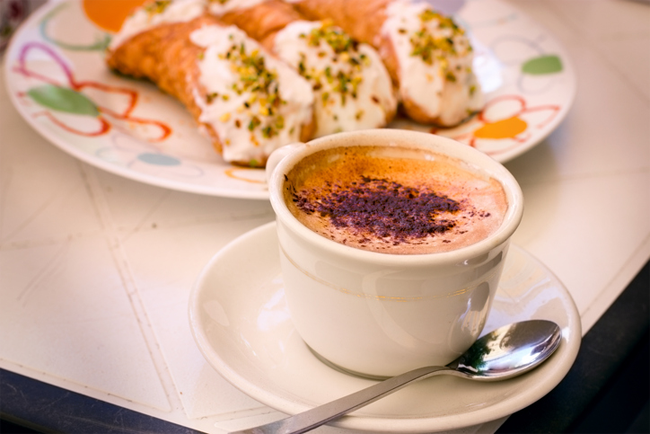
By Larry Mogelonsky, MBA, P. Eng. (www.hotelmogel.com)
Although this article pertains to only coffee, the concepts presented apply to nearly all types of cuisine and F&B presentations. In today’s world where Starbucks and McCafé are considered the baseline for what’s tolerable, any café or hotel that wants to make an impression through its coffee service must exceed these two franchised products which, for our purposes, are where the current expectation is.
Thus, success requires two key elements – superior quality and diversity of menu. As an example of how this works, suppose the nearest franchised coffeehouse provides a basic menu of drip coffee, americanos, espressos and cappuccinos, while you offer the exact same list. No matter the quality of the beans you source, how much more knowledgeable your baristas are or how much better your machinery is, you are still competing on apples to apples. You are still comparing almost imperceptible changes in flavor while not presenting anything even slightly different.
Instead, you need to bring people slightly outside of their comfort zones by offering a few beverages and an assortment of snacks that aren’t what one typically finds nowadays at a café. With so many options at your disposal, where do you start? How do you go about finding the right balance of exotic and traditional so you can wow patrons without alienating them?
Introducing ‘hyper-regionality’ where you might look to rebrand your breakfast outlet or café with a theme inspired by a specific geographic region. One negative consequence of the vast spread of franchised coffeehouses is that we’ve now homogenized our coffee selection, which means that relishing in the nuances of a very specific culture will automatically differentiate your restaurant outlet from the competition.
This hyper-regionality is becoming a powerful trend to help break away from the pack of nationally focused F&B products. As travelers and travel blogs start to rediscover various country’s local traditions that vary region by region, hoteliers must likewise incorporate this specificity to meet the modern demand and to better engage customers by crafting a superior dining experience.
For instance, you can’t simply launch an Italian café concept anymore. People won’t even blink at this. Rather, you would have to choose between opening a Roman, Tuscan, Sicilian, Venetian, Piedmontese, Milanese, Calabrese or Campanian restaurant. Then instead of following the nomenclature that some bigwig in Seattle once decided was what you would call an americano, you opt to put this drink on the menu as a caffè ristretto (meaning restrained or narrow), caffè corto (short) or, obvious enough, caffè normale. Just a bit of research and a few simple changes can work to build excitement.
Thinking beyond Italy, would you instead consider modeling your restaurant after an authentic Parisian patisserie where the smell of melted butter oozes through the corridors, a Catalonian café with vibrant décor to mirror the frenetic Barcelona nightlife or perhaps a wild little place like what you would find next to a bazaar in Istanbul?
The key thrust behind the emergence of hyper-regionality is that you can’t make gains anymore by being just a generalized imitator. As with your coffee service, you must reinject all parts of your F&B slate with more specificity in order to enrich the story and to deepen the guest experience.
This article may not be reproduced without the expressed permission of the author.
Editor’s note: To discuss business challenges or speaking engagements please contact Larry directly.


